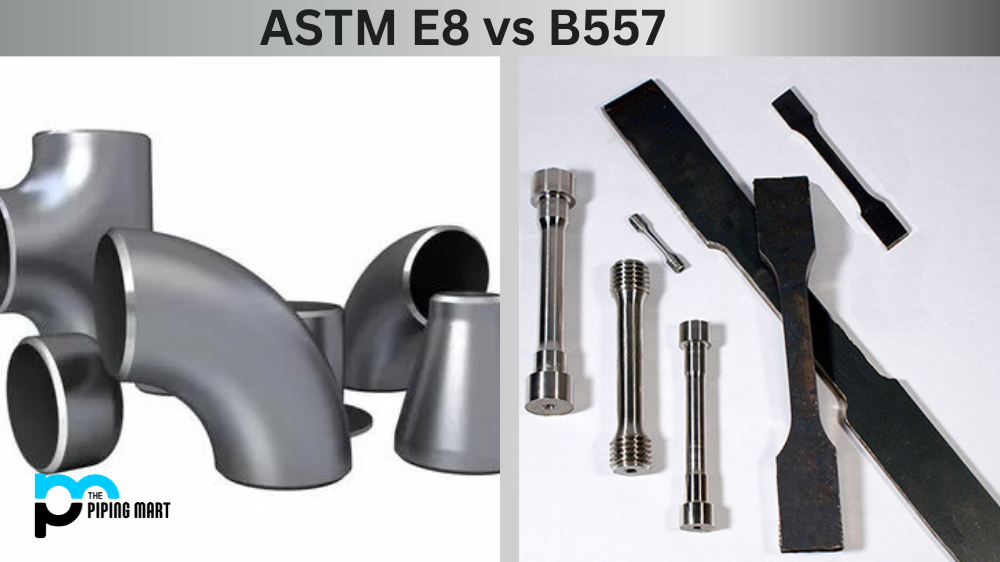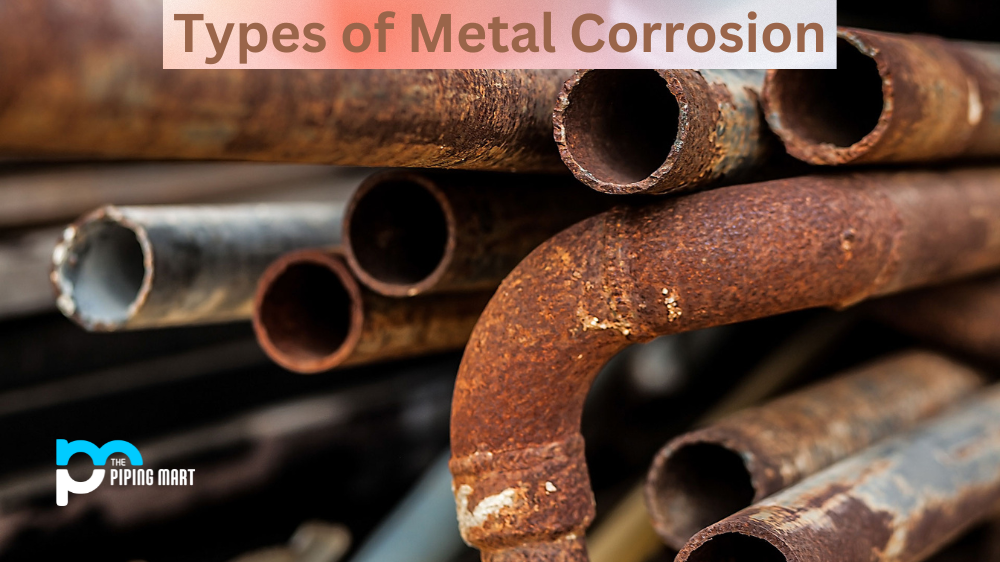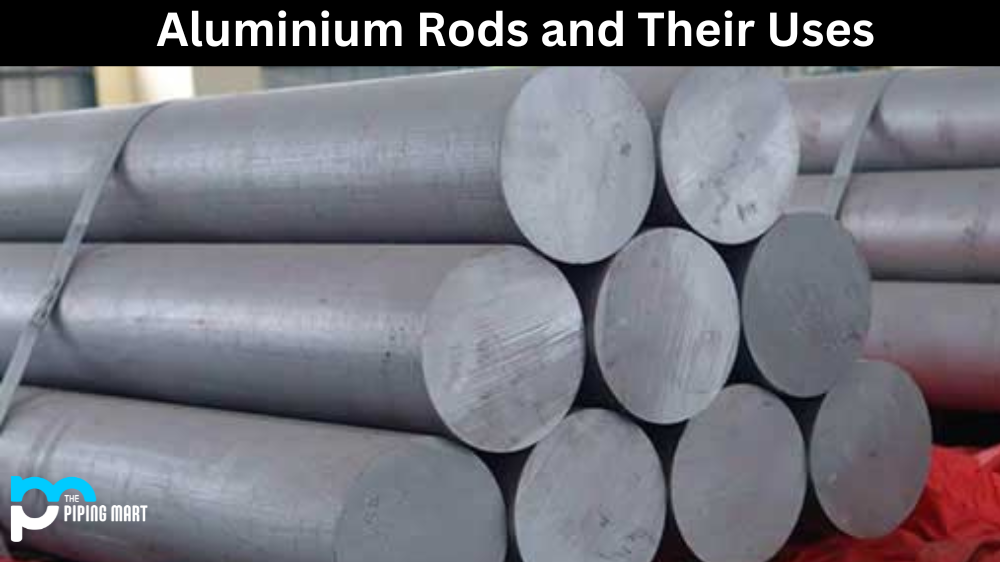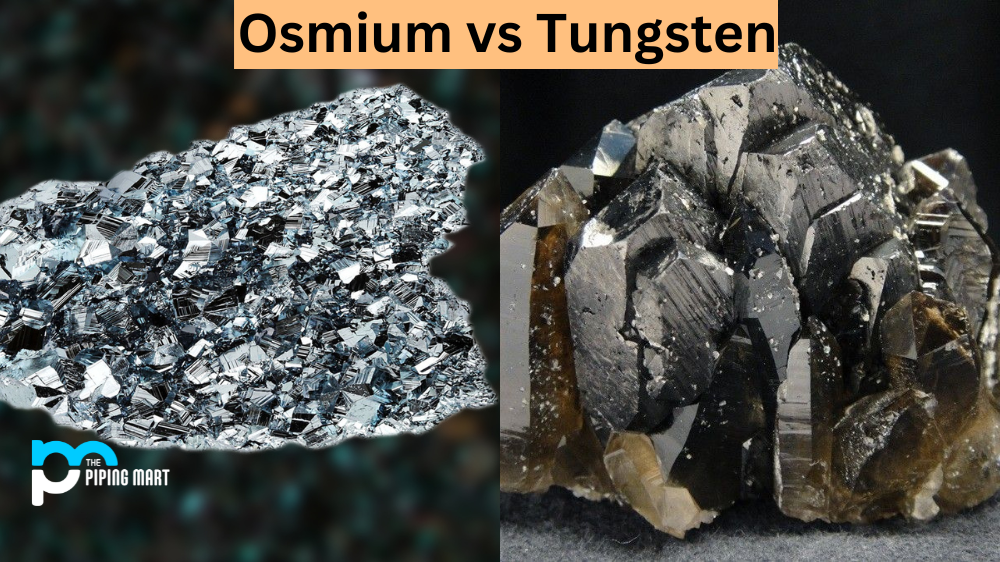Materials science and engineering rely heavily on standardized testing methods to ensure accurate and reproducible results. ASTM International, an organization that develops and publishes technical standards for various materials and products, has set two popular means for the mechanical testing of materials: ASTM E8 and B557. If you are new to materials testing, it can be challenging to understand what sets these two standards apart. This blog will help you understand the critical differences between ASTM E8 and B557 standards.
What is ASTM E8?
ASTM E8 is a standard that covers the tension testing of metallic materials. The bar is commonly used in the aerospace and automotive industries.
What is B557?
B557 is a standard that covers the tension testing of ferrous and non-ferrous metals. The bar is commonly used in the construction, shipbuilding, and oil and gas industries.
Difference Between ASTM E8 and B557
One of the main differences between ASTM E8 and B557 is the materials they cover. ASTM E8 only covers metallic materials, while B557 covers ferrous and non-ferrous metals. Additionally, B557 covers a broader range of material thicknesses than ASTM E8.
Use ASTM E8
You may use ASTM E8 for your tension testing needs for several reasons. One reason is that it covers a wide range of material types, including both metals and alloys. It can also be used for testing at low and high temperatures. Another reason to use ASTM E8 is that it is accurate and repeatable.
Use B557
You may use B557 for your tension testing needs for several reasons. One reason is that it can test various metal types, including ferrous and non-ferrous metals. It can also be used for testing at low and high temperatures. Another reason to use B557 is that it is accurate and repeatable.
Purpose and Scope
ASTM E8 is a general test widely used for testing the tensile properties of metallic materials. The test measures the strength and ductility of materials under tensile loads. The test uses a standard specimen with a specific shape and size and can be performed at different temperatures and strain rates. B557 is a test method designed explicitly for compression testing of metals. This test evaluates the compressive yield strength, the compressive modulus of elasticity, and the plastic behaviour of metals.
Testing Procedure
The testing procedure for ASTM E8 and B557 differs in specimen preparation, mounting, and loading conditions. ASTM E8 requires the specimen to have a circular or rectangular cross-section and the gauge length to be marked on the model. The model is mounted on the testing machine and is subjected to a constant tensile load until it breaks. B557, on the other hand, requires the axial and lateral dimensions of the specimen to be precisely measured and the ends of the model to be perfectly parallel. The model is loaded between the platens of the testing machine, and the load is increased until the model fails.
Data Analysis
ASTM E8 and B557 testing methods also differ in how data is analyzed. ASTM E8 measures the elongation of the specimen during the testing process, and the tensile strength is calculated based on the cross-sectional area and the maximum load applied. B557 measures the model’s deformation as the load increases, and the compressive strength is calculated based on the full applied load and the cross-sectional area.
Applications
ASTM E8 and B557 standards are widely used for testing metal materials, but they have different applications based on the specific properties being tested. ASTM E8 is commonly used for testing the mechanical properties of metals such as aluminium, copper, and steel. It can assess the quality of raw materials, finished products, and welded structures. B557 is used to evaluate the compressive properties of materials such as springs and metal components and can be used in the design and analysis of mechanical parts.
Conclusion
In summary, ASTM E8 and B557 are two widely used standards for materials testing, each with its unique purpose and scope. ASTM E8 is a general test used for testing the tensile properties of metals, while B557 is a test method designed explicitly for compression testing of metals. Although their testing procedures and data analysis methods differ, both standards are essential in ensuring the quality and performance of materials used in various applications. By understanding the differences between ASTM E8 and B557 standards, materials scientists and engineers can choose the most appropriate testing method for their needs.
Rachana is a dedicated and ambitious young woman who has made a name for herself in the metal industry. From her earliest days in the industry, Rachana showed a natural talent for problem-solving and a keen eye for detail. In her free time, She enjoys reading up on the latest advancements in the industry, as well as exploring new ways to innovate and improve upon existing processes.




